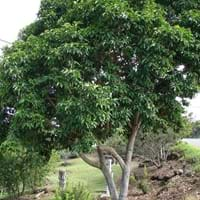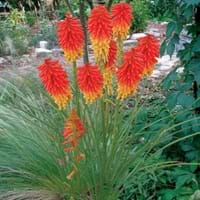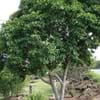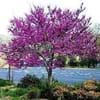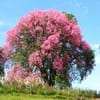Life Span
Perennial
Perennial
Origin
Southeast Asia, Southern Asia, Tropical Indomalaya
Hybrid origin
Types
Not Available
Not Available
Habitat
Broad-Leaved Forests, Subtropical forests, tropical environments
Damp Places, Marshy ground
USDA Hardiness Zone
10-11
6-9
AHS Heat Zone
Not Available
9-4
Sunset Zone
16, 17, 18, 19, 20, 21, 22, 23, 24
2a, 2b, 3a, 3b, 4, 5, 6, 7, 8, 9, 14, 15, 16, 17, 18, 19, 20, 21, 22, 23, 24
Habit
Not Available
Clump-Forming
Flower Color
Gold, Tan, Yellow
Yellow, Red, Orange, Pink
Flower Color Modifier
Bicolor
Bicolor
Fruit Color
Green
Not Available
Leaf Color in Spring
Green
Green, Blue Green
Leaf Color in Summer
Dark Green
Green, Blue Green
Leaf Color in Fall
Green
Blue Green, Gray Green, Light Yellow
Leaf Color in Winter
Green
Light Green
Leaf Shape
Ovate elongated
Linear
Plant Season
Early Summer, Summer
Spring, Summer
Sunlight
Full Sun, Partial shade
Full Sun, Partial Sun
Type of Soil
Dry, Loam
Clay, Loam, Sand
The pH of Soil
Slightly Acidic
Acidic, Neutral
Soil Drainage
Well drained
Well drained
Bloom Time
Early Fall, Early Summer, Mid Spring, Mid Summer
Early Summer, Summer
Tolerances
Drought
Drought
Where to Plant?
Container, Ground
Container, Ground
How to Plant?
Layering, Seedlings
Divison, Seedlings
Plant Maintenance
Low
Medium
Watering Requirements
Needs watering once a week
Needs more water during establishment, Water Deeply, Water in morning to avoid prompting diseases, Water in the early morning hours
In Summer
Moderate
Lots of watering
In Spring
Alternate Days
Moderate
In Winter
Average Water
Average Water
Soil pH
Slightly Acidic
Acidic, Neutral
Soil Type
Dry, Loam
Clay, Loam, Sand
Soil Drainage Capacity
Well drained
Well drained
Sun Exposure
Full Sun, Partial shade
Full Sun, Partial Sun
Pruning
Prune in winter, Remove dead or diseased plant parts
Cut or pinch the stems, Remove damaged leaves, Remove dead branches, Remove dead leaves
Fertilizers
Fertilize in early spring, General garden fertilizer
All-Purpose Liquid Fertilizer, Apply N-P-K
Pests and Diseases
Not Available, Red blotch
Onion thrips, Red blotch, Root rot
Plant Tolerance
Drought
Drought, Moisture
Flower Petal Number
Single
Single
Foliage Texture
Medium
Coarse
Foliage Sheen
Matte
Matte
Attracts
Birds, Caterpillar, Not Available
Snails
Allergy
Chest tightness, Diarrhea, Dizziness, Nausea, Not Available, Vomiting
Not Available
Aesthetic Uses
Showy Purposes
Borders, Cottage Garden, Ground Cover
Beauty Benefits
Improve skin condition, Perfumes
Not Available
Environmental Uses
Air purification, Food for birds, Shadow Tree, Shelter for wildlife
Air purification
Medicinal Uses
Asthma, Combats Stress, Fever, Kidney problems, Urinary tract problems
Not Available
Part of Plant Used
Flowers
Not Available
Other Uses
Decoration Purposes, Making Perfumes, Making Sweet Scented Oil, Oil is used in perfume, soaps, creams, etc., Used as essential oil, Used as Ornamental plant, Used for fragrance
Not Available
Used As Indoor Plant
No
No
Used As Outdoor Plant
Yes
Yes
Garden Design
Feature Plant, Shady Tree, Topiary / Bonsai / Espalier
Container, Cutflower, Mixed Border, Rock Garden, Wall
Botanical Name
Magnolia champaca
KNIPHOFIA 'Border Ballet'
Common Name
champak
Tritoma, Wisley Blue Spring Starflower, Wisley Blue Springstar
In German
champaka
Tritoma
In French
magnolia champaca
Tritoma
In Spanish
champaca magnolia
tritoma
In Greek
μανόλιας Champaca
tritoma
In Portuguese
magnólia champaca
Tritoma
In Polish
Magnolia champaca
Tritoma
In Latin
Magnolia champaca
Trytoma
Phylum
Magnoliophyta
Tracheophyta
Class
Magnoliopsida
Magnoliopsida
Order
Magnoliales
Asparagales
Family
Magnoliaceae
Liliaceae
Clade
Angiosperms, Magnoliids
Angiosperms, Monocots
Tribe
Not Available
Not Available
Subfamily
Not Available
Not Available
Number of Species
Not Available
Properties of Michelia Champaca and Tritoma
Wondering what are the properties of Michelia Champaca and Tritoma? We provide you with everything About Michelia Champaca and Tritoma. Michelia Champaca doesn't have thorns and Tritoma doesn't have thorns. Also Michelia Champaca does not have fragrant flowers. Michelia Champaca has allergic reactions like Chest tightness, Diarrhea, Dizziness, Nausea, Not Available and Vomiting and Tritoma has allergic reactions like Chest tightness, Diarrhea, Dizziness, Nausea, Not Available and Vomiting. Compare all the properties and characteristics of these two plants. Find out which of these plant can be used as indoor plant. If you are interested to decorate your house and garden, find out aesthetic uses, compare them and select the plant which will beautify your surrounding. Along with beautification, try comparing medicinal and edible uses of Michelia Champaca and Tritoma and you can choose the plant having best and most benefits.
Season and Care of Michelia Champaca and Tritoma
Season and care of Michelia Champaca and Tritoma is important to know. While considering everything about Michelia Champaca and Tritoma Care, growing season is an essential factor. Michelia Champaca season is Early Summer and Summer and Tritoma season is Early Summer and Summer. The type of soil for Michelia Champaca is Dry, Loam and for Tritoma is Clay, Loam, Sand while the PH of soil for Michelia Champaca is Slightly Acidic and for Tritoma is Acidic, Neutral.
Michelia Champaca and Tritoma Physical Information
Michelia Champaca and Tritoma physical information is very important for comparison. Michelia Champaca height is 750.00 cm and width 600.00 cm whereas Tritoma height is 45.70 cm and width 50.80 cm. The color specification of Michelia Champaca and Tritoma are as follows:
Michelia Champaca flower color: Gold, Tan and Yellow
Michelia Champaca leaf color: Green
Tritoma flower color: Yellow, Red, Orange and Pink
- Tritoma leaf color: Green and Blue Green
Care of Michelia Champaca and Tritoma
Care of Michelia Champaca and Tritoma include pruning, fertilizers, watering etc. Michelia Champaca pruning is done Prune in winter and Remove dead or diseased plant parts and Tritoma pruning is done Cut or pinch the stems, Remove damaged leaves, Remove dead branches and Remove dead leaves. In summer Michelia Champaca needs Moderate and in winter, it needs Average Water. Whereas, in summer Tritoma needs Lots of watering and in winter, it needs Average Water.
